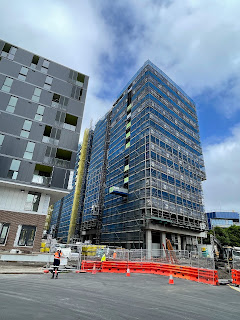New South Wales
雪梨市大學集中區的房價高,一房不帶車位的公寓目前(2024)都要 80 萬以上,兩房帶車位要 110 以上。租金部分,一房可租 800/week,兩房可租 1200/week (也可能更高)。
Notes
1. 買方無須支付仲介費。新房或二手房都是 (這點和美國同)。
2. 二手房賣方支付佣金約 1.5%~2%。
3. NSW property management fee(代管租賃)大約 3.5~5%。
4. 公寓大樓管理費 Strata Fee(美國的 HOA) 一季一季付,一房約 850-950/季,
二房約1000-1350/季。所以一房 80/week,二房 113/week。
5. 簽約合同需有律師看過,費用約 1,500。
6. 投資出租通常還會買保險防止租客不繳房租,費用 30-50/月,看各人要保的程度。
7. Land tax(地價稅) 本國人有免稅額,以2024年來說,個人土地總價值在1,075,000內
都是免稅的,所以一套公寓土地價值大約在300,000,就免繳交地價稅。
2023年之後,外國人 Land Tax 的 Surcharge Rate 是 4%,
表示每年除了該繳的地價稅之外要再加 4% x 持有住宅(residential) 土地地價總值。
Commercial 就不用課 Surcharge。
- 細節還是要詢問律師,畢竟每個人的身份(簽證)不同。
- NSW 稅務網站:https://www.revenue.nsw.gov.au/
If you have an ABN as a sole trader, you will have to pay tax on your individual income. Find out the rules in this article.
If you’re running your own business, you’re probably familiar with your Australian Business Number (ABN). As a business owner, you also have to comply with the rules set out by the Australian Tax Office (ATO). Your ABN doesn’t simply give you a reference point when sending invoices and other documents, it also means that you’re accountable to the ATO if you don’t comply with your tax obligations.
In this guide, we’ll explain what your tax obligations are as a holder of an ABN. Fundamentally, the tax you have to pay on your ABN depends on your business and your combined income. This is all counted and assessed when the financial year comes to an end on 30 June.
Australian Business Numbers (ABNs)
To operate your business in Australia, it is necessary to have an ABN (Australian Business Number). This unique 11-digit number is the key means of identifying a business and is provided when you register your business. Sole traders, partnerships and companies are all required to have an ABN.
You can register your ABN using an online form in a matter of minutes. Registering your ABN is crucial for tax purposes, including GST and PAYG. If your business is making more than $75,000 annually, then you may face a penalty if the ATO finds out that you haven’t applied for an ABN. If you are doing business with other businesses, then that business can withhold payment to you if you do not list your ABN on invoices you issue.
ABNs and Tax File Numbers (TFNs)
An ABN is necessary for operating a business, while a TFN (Tax File Number) is required for any person working in Australia. Most people apply for their own TFN when they start working at their first job. Your TFN will stay with you for life. However. if you start a partnership business, then you and your partner will have to apply for a separate TFN.
When you start working, you give your TFN to your employer, who can then deduct tax from your income. This is normally done through PAYG (Pay as You Go). With a TFN, tax is taken at the source, i.e., at the time you are paid. This means you normally don’t have to worry about your tax obligations at the end of the financial year.
If you run your business as a sole trader, you will be able to use your current TFN for tax purposes. However, if you are in a partnership or have started a company, your business will have its own TFN.
Tax Implications
With an ABN, tax is not taken directly from the source. For example, a carpenter raising an invoice will receive full payment for his or her work; tax is not deducted at this stage.
This means that as a sole trader with an ABN, you need to set aside a portion of your income so that you can meet your tax obligations when the financial year ends. When June rolls around, you must include your ABN earnings with any other income received; after you lodge your tax return, tax is assessed based on that combined income. The tax-free threshold sits at $18,200. If your income is higher than this, then progressive tax rates will apply.
What and how you need to report depends on your business structure. You can also use the ATO tax calculator to estimate the amount you are obliged to pay.
Compliance
Staying organised is key to ensuring you can meet your tax obligations at the end of the financial year.
Some things you can do include:
- Keeping all invoices issued as part of your business
- Retaining receipts for products purchased as part of running your business
- Understanding your tax obligations according to the ATO
- Being transparent and accountable in all your operations
Further, having a tax lawyer advise you on your situation will help you ensure you’re complying with your obligations. Tax can be tricky when it comes to running your business. However, if you understand the requirements and are organised, it doesn’t have to be difficult at all.











沒有留言:
張貼留言